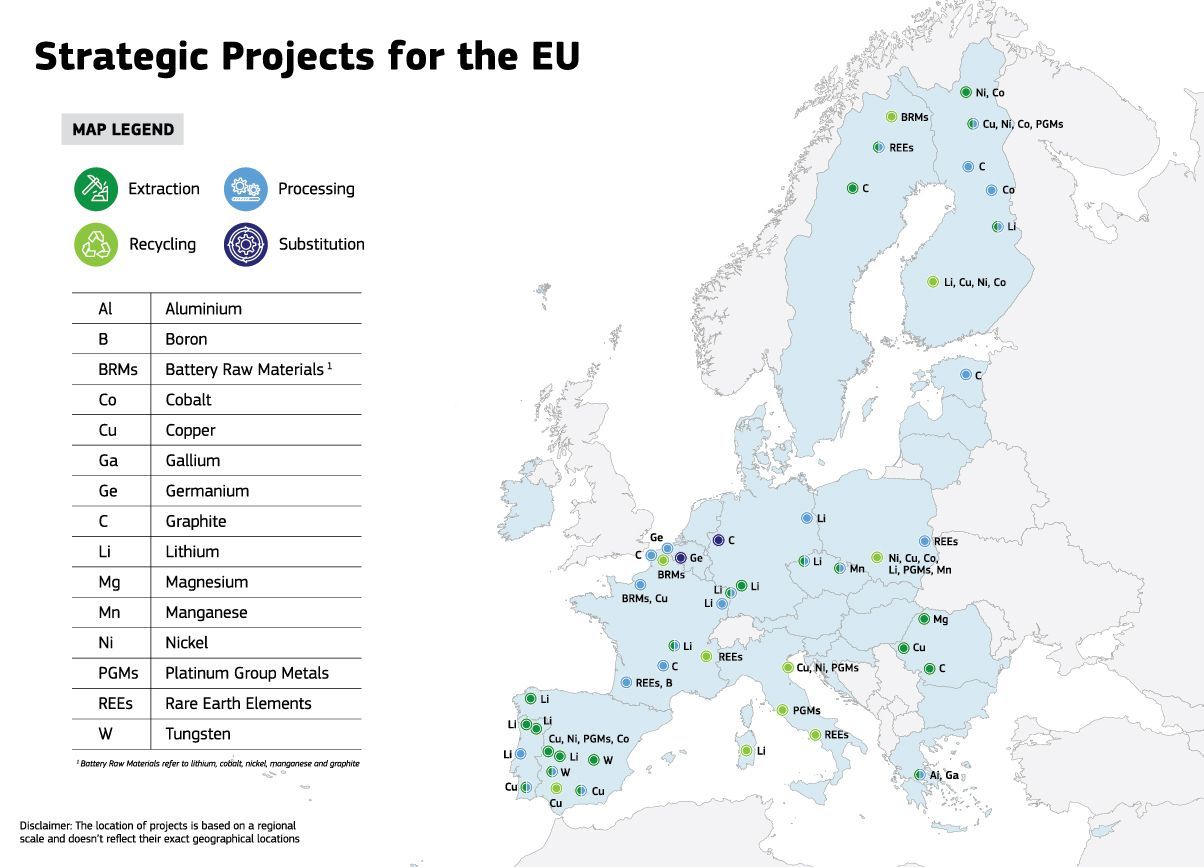The European Union wants to mine new metals and minerals and ignores the plight of local communities. Its Critical Raw Materials Act came into force in May 2024. The goal: to make Europe more independent in terms of raw materials that the EU considers essential for its economy. A call for projects that could help realise this was immediately launched. Last week, the 47 projects that will receive funding and fast tracked permits were announced. 23 of these are mining projects.
The voice of local communities is not being ignored
Local communities were not consulted in the decision-making process. The four open-pit lithium mines that Savannah Resources wants to dig in Covas do Barroso, Portugal, are on the list. This despite years of protest from the local community. The Anglo American mine that would drive the Sámi from their land in Finland: on the list. The Euro Sun Mining mine in Rovina, against which the local population won a court case, you guessed it: on the list. Cinovec in the Czech Republic? Yup.
The EU gives geostrategic interests precedence over the health and living environment of thousands of people. In doing so, it is trampling on its own Aarhus Convention. It is mandatory for local communities to be given access to environment-related information about their living environment, to be granted meaningful participation in projects that have an impact on their living environment and to be given access to an independent court to guarantee this right. The EU is ignoring its own legislation to let companies dig for metal.
Mining = environmental disaster
It is only logical that people protest against the opening of new mines. European regulations on mining are limited to the 20-year-old ‘Extractive Waste Directive’, hopelessly outdated legislation. Even countries with a history of destructive extractivism, such as Brazil and Peru, are doing better in this area. Europe also has a history of far-reaching destruction through mining. In 1998, a dam at a Boliden mine in Aznacóllar, Spain, collapsed, releasing 6 million tonnes of toxic mining waste into the environment. Boliden declared its Spanish branch bankrupt and never took full responsibility for the damage it caused. In 2000, a dam in Baia Mare burst, releasing enormous quantities of cyanide. The drinking water of 2.5 million Hungarians was poisoned and 80% of the fish in the Tisza River died.
In the event of a break or leak, the dams for storing mining waste that will be built for the current mining boom could cause that damage multiple times over.. It is striking that the EU’s list of strategic projects is full of companies that are guilty of ecocide. The copper mine Cobre Las Cruces discharged arsenic into the area around Seville, drew groundwater at a faster rate than permitted, had three of its managers convicted of environmental crimes and in 2019 suffered a landslide on its premises, but today it is coolly receiving additional funding and easier access to permits from the EU. This is nothing new. Companies like this have been receiving funds from the EU for ‘green mining’ for years, among others through the Horizon project. The scale (and therefore the consequences) will however be a lot bigger now.
Yet mining does not need disasters to destroy the environment and the living environment. The mining sector is responsible for an estimated 4 to 7 percent of global emissions. Mining requires huge amounts of water and thus depletes aquifiers that are sources of drinking water for communities. Mining waste and its storage is polluting and (as shown in the previous paragraph) risky. In Kiruna, Sweden, an entire village recently had to be relocated because it was literally falling into a mine.
Jadar, Serbia
The EU’s current focus is on Jadar, Serbia. It is said to have the largest underground reserve of lithium in Europe. Rio Tinto, a company known for ecocide, crimes against humanity and war crimes around the world, wants to excavate this reserve. However, it is facing huge protests from the Serbians. The EU will soon announce which strategic projects it will support outside the EU and is very keen to include Jadar on that list. Like a true colonial institution, the EU is letting its propaganda run free in the hope of drowning out the voice of the local population. Catapista’s recently wrote several opinion pieces about it in Dewereldmorgen and De Standaard. Unfortunately, major media outlets do not allow the local population to have their say in their recent articles about mining.
There is an alternative
The dominant discourse says that we need new mining to enable Europe to continue to meet our needs. But what needs? We do not need new electric cars, but more, better and free public transport. We do not need new weapons. Nobody is asking for more disposable gadgets with lithium-ion batteries. Yet that is where a large part of our new production will go. And it doesn’t stop there. Building a mine costs so much money that once it is open, it has to continue producing. That means production will be for mining and not the other way around.
Only if the gigantic sums that will be freed up for new mining were invested in degrowth and recycling, in collective transport modes, in ensuring that electronic products last a long time, only then will Europe be truly independent of materials.



